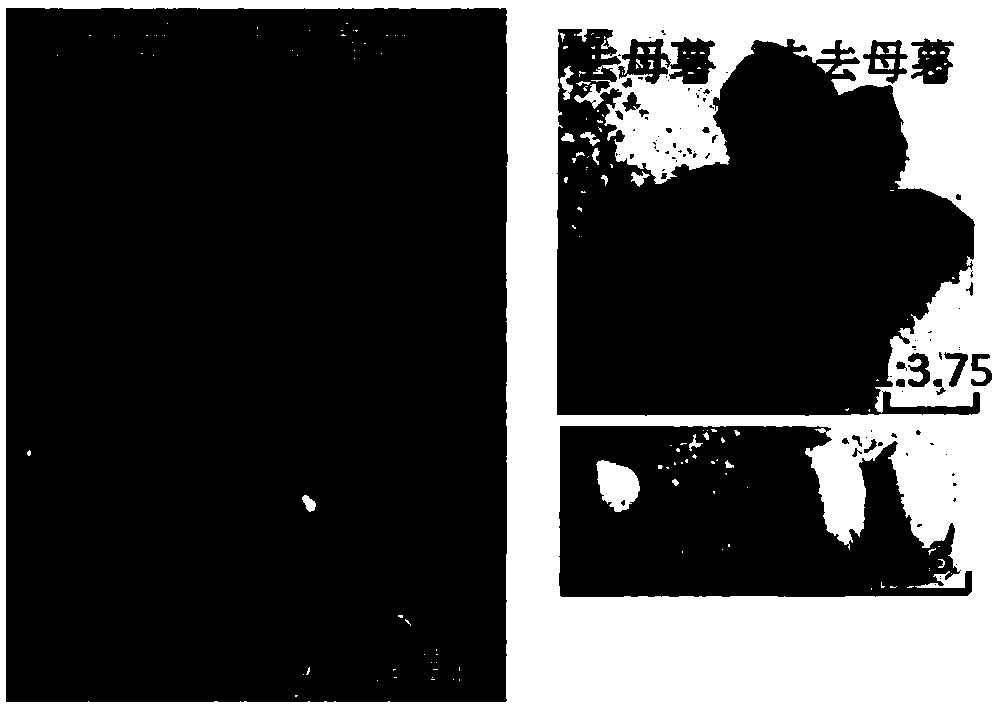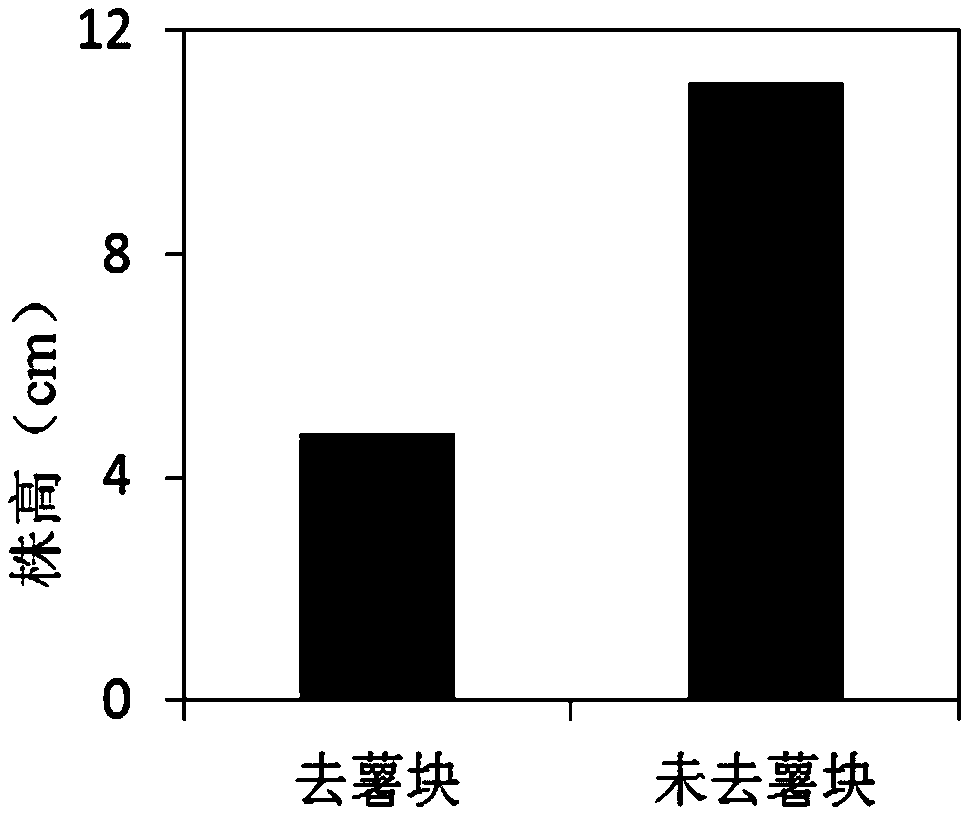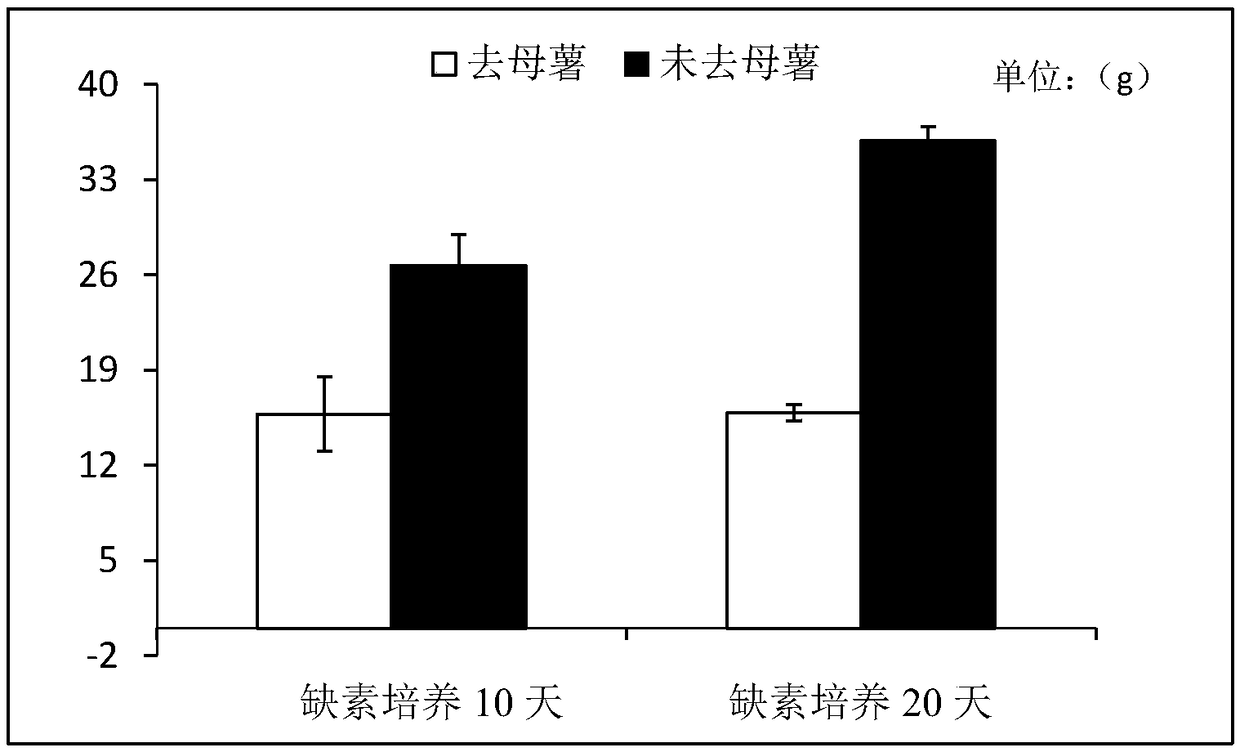Potting method capable of achieving zinc deficiency of Solanum tuberosum L.
A potato and zinc-deficiency technology, applied in the field of plant cultivation, can solve problems such as inability to carry out research on the impact of zinc deficiency on potato growth period yield, death, poor effect, etc., to achieve good survival, reduce sources, and good water retention capacity Effect
- Summary
- Abstract
- Description
- Claims
- Application Information
AI Technical Summary
Problems solved by technology
Method used
Image
Examples
Embodiment 1
[0037] A potted method for potato zinc deficiency, comprising the following steps:
[0038] Cut into pieces and mix with medicine: Disinfect the cutting knife with 0.5% potassium permanganate disinfectant, cut into potato pieces weighing about 25g, and mix well with 0.02kg of medicinal powder for every 1kg of potato pieces;
[0039] Planting: Take a 25cm flowerpot with a hole in the bottom and a cotton pad, mix the quartz sand with a size of 1-2mm and a size of 0.4-0.7mm in a ratio of 3:1 and put the potato into the pot , covered with 2cm thick quartz sand, poured deionized water until water seeped out from the bottom of the basin;
[0040] Remove the mother potato: pour deionized water every 2-3 days until the water seeps out from the bottom of the basin. When two compound leaves grow and fully unfold, remove the quartz sand at the root, carefully remove the exposed mother potato, and then remove the Quartz sand finishing and leveling;
[0041] Nutrient-deficiency culture: ...
Embodiment 2
[0044] A potted method for potato zinc deficiency, comprising the following steps:
[0045] Cut into pieces and mix with medicine: sterilize the cutter with 75% alcohol, cut into potato pieces weighing about 25g, and mix with 0.02kg of medicinal powder for every 1kg of potato pieces;
[0046] Planting: Take a 25cm flowerpot with a hole in the bottom and a cotton pad, mix the quartz sand with a size of 1-2mm and a size of 0.4-0.7mm in a ratio of 3:1 and put the potato into the pot , covered with 2cm thick quartz sand, poured deionized water until water seeped out from the bottom of the basin;
[0047] Remove the mother potato: pour deionized water every 2-3 days until the water seeps out from the bottom of the basin. When two compound leaves grow and fully unfold, remove the quartz sand at the root, carefully remove the exposed mother potato, and then remove the Quartz sand is tidied and leveled; in the next 2 weeks, pour Hoagland's liquid culture solution every 2-3 days until...
PUM
 Login to View More
Login to View More Abstract
Description
Claims
Application Information
 Login to View More
Login to View More - R&D
- Intellectual Property
- Life Sciences
- Materials
- Tech Scout
- Unparalleled Data Quality
- Higher Quality Content
- 60% Fewer Hallucinations
Browse by: Latest US Patents, China's latest patents, Technical Efficacy Thesaurus, Application Domain, Technology Topic, Popular Technical Reports.
© 2025 PatSnap. All rights reserved.Legal|Privacy policy|Modern Slavery Act Transparency Statement|Sitemap|About US| Contact US: help@patsnap.com



